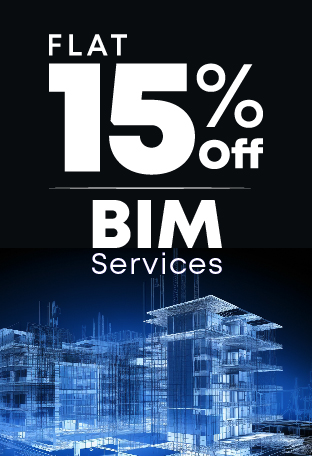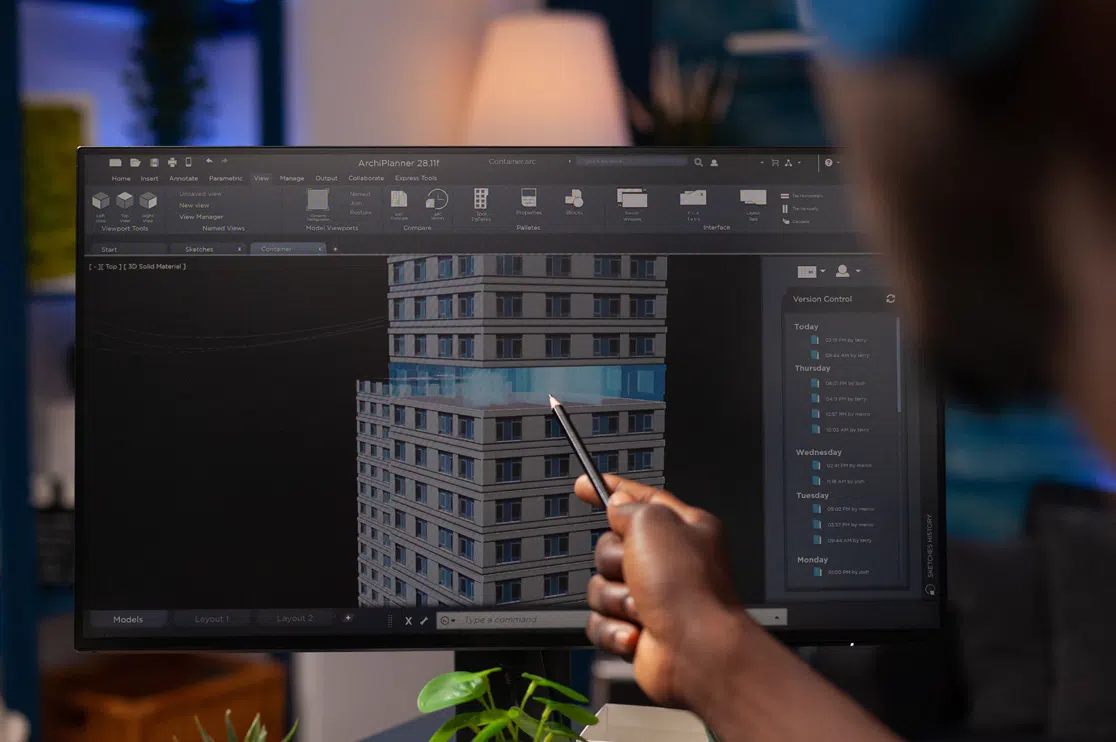There was a time; decades ago, when architects would draw the building designs by hand. If you entered their workspace you would have found them working on their large drafting tables surrounded by drafting pencils and apprentices. Around 20 years ago, computer replaced paper drawings. The CAD (Computer Aided Design) was introduced in the architecture industry. It completely re-shaped the architectural profession. The quality of the end result changed drastically because this new technology turned out to be faster and more accurate.
But, when CAD was first introduced, it did not receive a very welcoming expression from the industry. It proved to be more tedious for architects to give up their traditional process and adopt the new technology. They were not so techno-savvy and tried to hold on to their old ways. So learning the new procedures and operations and transiting to a whole different process seemed to be quite challenging. However, with time, CAD became a part of their culture, reaping many benefits and overcoming challenges. In fact, CAD is a part of their culture.
This is where we stand with BIM (Building Information Technology) today. It’s a new and a fresh technology, which is not just a physical entity focusing on one processor route, but it is a way of working. Though it is very beneficial there are reasons why architects have failed to completely adopt it. Some reasons are quite similar to what the industry faced when transiting from paper drawings to CAD. Tradition – the unwillingness to change, the old ways of doing things. Yes, CAD has proved to be beneficial, but we live in a world that is constantly changing and improving. And in order to keep pace with it, companies need to avoid being so rigid in their ways. Another reason is the time and money investment – in order to train their employees and embrace the new tool both time and money needs to be invested in their employees, training material, and software. This restricts the organizations to go that extra way to adopt BIM.
BIM has its advantages.
If we look at the three different words separately – building, information, and modeling, individually they all exist in the industry today. Our architects are building things based on information and creating models that support the concepts. However, BIM is the integration of the building, the information, and the modeling under one platform. There are many benefits of the same and hence we recommend and help our clients and customers to embrace this technology.
With the use of BIM, technology architects can create buildings with real-life elements such as wall systems, cladding, and glazing. When building models using the basic forms these elements are overlooked but with BIM even the minutest of details are dealt with such as sheathing and moisture barriers.
When we use BIM software, a lot of information can be shared through the model, such as physical properties like laser scans of the infrastructure, manufacturing information like material strength and material cost. This is what sets BIM apart from CAD – Once the information is coded in, BIM allows the team to extract and analyze the real world data. This information is available to the entire team and it aids them to create tables and schedules for things like material cost estimations and inventories.
With the help of BIM software and tools, we can create 3D models and visualize concepts in the most realistic form, which then helps the designers and architects to solve potential issues before the construction begins. Also, whether it is plumbing or electrical work, all of it can be modeled in once the building is designed.
BIM helps in saving both time and budget. Designers do not need to rework due to fewer errors or duplicate drawings anymore for different building requirements. Communication with the entire construction team becomes much easier. The model helps in conveying the scope, steps, and outcome to the project team. You gain access to the database anywhere on any device.
The future of BIM is both stimulating and challenging. The adoption of BIM technology is a difficult task for many organizations but once they learn the new way of doing things it will lead to improved performance at low costs.
Tell us your story…what challenges and concerns are you facing or you faced with the transition to BIM? Want us to help you to migrate to BIM smoothly and effectively? Connect with us. We will be happy to get you started.
Maximum Value. Achieved.







 How AI BIM Modeling Shaping the Future of Residential Construction?
How AI BIM Modeling Shaping the Future of Residential Construction?  How BIM Services Enhance Collaboration, Design Choices, and Project Efficiency for Architects? – A Guide
How BIM Services Enhance Collaboration, Design Choices, and Project Efficiency for Architects? – A Guide  How is Artificial Intelligence in Construction Design Transforming Architectural Landscape?
How is Artificial Intelligence in Construction Design Transforming Architectural Landscape?  BIM Coordination Benefits for Contractors in the Preconstruction Stage
BIM Coordination Benefits for Contractors in the Preconstruction Stage